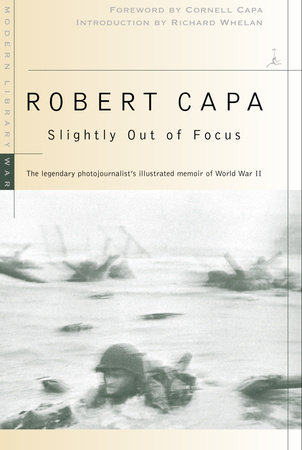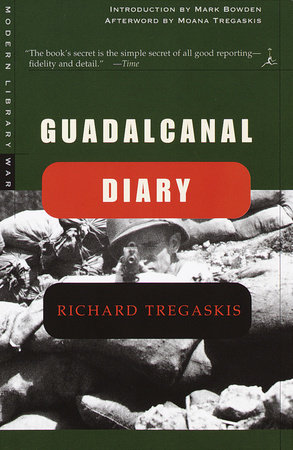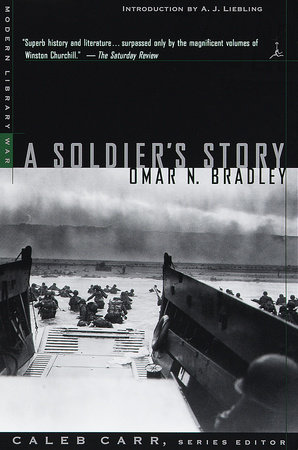Excerpt
Hitler's U-Boat War
On a chilly day in the late fall of 1945, our submarine, the U.S.S. Guardfish, proudly flying battle pennants, nosed into the Submarine Base, New London, Connecticut, joining scores of mass-produced sister ships, all home from the sea.
Collectively we submariners were known as the Silent Service, and proud we were of that distinction. Unknown to the public, we had played a decisive role in the defeat of Japan. In forty-two months of secret warfare in the Pacific Ocean area, 250 of our submarines, mounting 1,682 war patrols, had savaged Japanese maritime assets, sinking 1,314 ships of 5.3 million gross tons, including twenty major warships: eight aircraft carriers, a battleship, and eleven cruisers. For almost three years Guardfish, a fine boat, had played a prominent role in that war, sending nineteen confirmed ships to the bottom (including two fleet destroyers and a patrol boat) during twelve long and arduous war patrols in Japanese-controlled waters.
After we had moored at a pier where we were to mothball Guardfish, we were startled to see a strangely different submarine close by. Painted jet black, she looked exceptionally sleek and sinister. We soon learned that she was a German U-boat that had surrendered shortly after VE-Day. She was manned by an American crew that was evaluating her on behalf of naval authorities in Washington.
This U-boat was very hush-hush and off-limits to ordinary souls. However, when she shifted her berth to our pier (and nicked us in the process), we became friendly with the American crew and gradually talked our way on board for a look-see. We learned that she was U-2513, a brand new Type XXI electro boat, one of two such craft allotted to the U.S. Navy as war prizes. Commissioned and commanded by one of Germanys most famous U-boat aces, Erich Topp, she and her mass-produced sister ships had been completed too late to participate in the war.
In our superficial examination of U-2513, we were quite impressed with some of her features, especially her top speed submerged. She had six sets of storage batteries, comprising a total of 372 cells (hence electro boat), which enabled her to quietly sprint submerged at about 16 knots for about one hour. This was twice the sprint speed of our submarines and sufficient to escape from almost any existing antisubmarine warship. Alternately, the large battery capacity enabled her to cruise submerged at slower speeds for a great many hours, whether stalking prey or escaping.
The next most impressive feature to us was her Schnorchel, or as we anglicized the German, snorkel. This was a sophisticated breathing tube or mast with air intake and exhaust ducts, which enabled U-2513 to run her two diesel engines while submerged. By rigging one diesel (or both) to charge the batteries while submerged, she could in theory remain underwater for prolonged periods, thereby greatly diminishing the chances of detection by enemy eyes or radar.
Nor was that all. Her periscope optics and passive sonar for underwater looking and listening were much superior to ours. Her ingenious hydraulically operated torpedo-handling gear could automatically reload her six bow torpedo tubes in merely five minutes. A third reload could be accomplished in another twenty minutes. The thickness and strength of her pressure hull was said to give her a safe diving depth limit of about 1,200 feet, twice our safe depth limit and sufficient to get well beneath most existing Allied depth charges. She even had an automatic pilot for precise depth-keeping at high speeds.
Much later, when some of these details and others about the Type XXI electro boat leaked out, they caused an utter sensation in naval circles. Prominent experts gushed that the Type XXI represented a giant leap in submarine technology, bringing mankind very close to a true submersible. Some naval historians asserted that if the Germans had produced the Type XXI submarine one year earlier they almost certainly could have won the Battle of the Atlantic and thereby indefinitely delayed Overlord, the Allied invasion of Occupied France.
The American evaluators on U-2513 were not so sure about these claims. In the classified report they sent to the Chief of Naval Operations, dated July 1946, they wrote that while the Type XXI had many desirable features that should be exploited (big battery, snorkel, streamlining, etc.), it also had many grave design and manufacturing faults. The clear implication was that owing to these faults, the XXI could not have made a big difference in the Battle of the Atlantic. Among the major faults the Americans enumerated:
Poor Structural Integrity: Hurriedly prefabricated in thirty-two different factories that had little or no experience in submarine building, the eight major hull sections of the Type XXI were crudely made and did not fit together properly. Therefore the pressure hull was weak and not capable of withstanding sea pressure at great depths or the explosions of close depth charges. The Germans reported that in their structural tests the hull failed at a simulated depth of 900 feet. The British reported failure at 800 feet, less than the failure depth of the conventional German U-boats.
Underpowered Diesel Engines: The new model, six-cylinder diesels were fitted with superchargers to generate the required horsepower. The system was so poorly designed and manufactured that the superchargers could not be used. This failure reduced the generated horsepower by almost half: from 2,000 to 1,200, leaving the Type XXI ruinously underpowered. Consequently, the maximum surface speed was only 15.6 knots, less than any oceangoing U-boat built during the war and slightly slower than the corvette convoy-escort vessel. The reduction in horsepower also substantially increased the time required to carry out a full battery charge.
Impractical Hydraulic System: The main lines, accumulators, cylinders, and pistons of the hydraulic gear for operating the diving planes, rudders, torpedo tube outer doors, and antiaircraft gun turrets on the bridge were too complex and delicate and located outside the pressure hull. This gear was therefore subject to saltwater leakage, corrosion, and enemy weaponry. It could not be repaired from inside the pressure hull.
Imperfect and Hazardous Snorkel: Even in moderate seas the mast dunked often, automatically closing the air intake and exhaust ports. Even so, salt water poured into the ships bilges and had to be discharged overboard continuously with noisy pumps. Moreover, during these shutdowns, the diesels dangerously sucked air from inside the boat and deadly exhaust gas (carbon monoxide) backed up, causing not only headaches and eye discomfort but also serious respiratory illnesses. Snorkeling in the Type XXI was therefore a nightmarish experience, to be minimized to the greatest extent possible.
The U.S. Navy did in fact adopt some of the features of the Type XXI electro boat for its new submarine designs in the immediate postwar years. However, by that time the Navy was firmly committed to the development of a nuclear-powered submarine, a true submersible that did not depend on batteries or snorkels for propulsion and concealment. These marvels of science and engineering, which came along in the 1950s, 1960s, and later, were so technically sophisticated as to render the best ideas of German submarine technology hopelessly archaic and to assure the United States of a commanding lead in this field well into the next century.
This little story about the Type XXI electro boat is a perfect example of a curious naval mythology that has arisen in this century. The myth goes something like this: The Germans invented the submarine (or U-boat) and have consistently built the best submarines in the world. Endowed with a canny gift for exploiting this marvelously complex and lethal weapon system, valorous (or, alternately, murderous) German submariners dominated the seas in both world wars and very nearly defeated the Allies in each case. In a perceptive study, Canadian naval historian Michael L. Hadley writes: "During both wars and during the inter-war years as well, the U-boat was mythologized more than any other weapon of war."
The myth assumed an especially formidable aspect in World War II and afterwards. During the war, the well-oiled propaganda machinery of the Third Reich glorified and exaggerated the successes of German submariners to a fare-thee-well in the various Axis media. At the same time, Allied propagandists found it advantageous to exaggerate the peril of the U-boats for various reasons. The end result was a wildly distorted picture of the so-called Battle of the Atlantic.
After the war, Washington, London, and Ottawa clamped a tight embargo on the captured German U-boat records to conceal the secrets of codebreaking, which had played an important role in the Battle of the Atlantic. As a result, the first histories of the U-boat war were produced by Third Reich propagandists such as Wolfgang Frank, Hans Jochem Brennecke, and Harald Busch, and by Karl Dönitz, wartime commander of the U-boat force, later commander of the Kriegsmarine, and, finally, Hitler's successor as Führer of the Third Reich. These histories, of course, did nothing to diminish the mythology. Hampered by the security embargo on the U-boat and codebreaking records and by an apparent unfamiliarity with the technology and the tactical limitations of submarines, the official and semiofficial Allied naval historians, Stephen Wentworth Roskill and Samuel Eliot Morison, were unable or unwilling to write authoritatively about German U-boats in the Battle of the Atlantic. Hence for decade after decade no complete and reliable history of the Battle of the Atlantic appeared, and the German mythology prevailed.
My wartime service on Guardfish kindled a deep and abiding interest in submarine warfare. As a Washington-based journalist with Time, Life, and the Saturday Evening Post, I kept abreast of American submarine developments during the postwar years, riding the new boats at sea, compiling accounts of the noteworthy advancements and politics in articles and books. In 1975 I published a work of love, Silent Victory: The U.S. Submarine War Against Japan, the first, full, uncensored history of the Silent Service in that very secret war.
The publication of Silent Victory triggered suggestions that I undertake a similar history of the German U-boat war.













